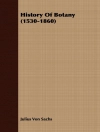This comprehensive book brings together the brightest minds in academic, featuring a curated selection of papers and presentations from the esteemed conference. With a focus on the intersection of the conference themes, this book provides a unique platform for researchers, practitioners, and innovators to share their cutting-edge research, innovations, and solutions.
Get ready to dive into the latest advancements in Artificial Intelligence and Internet of Things for Healthcare, Computer Vision, world of computer science, featuring advancements in machine learning, natural language processing, and more with the Proceedings of SMAI2024.
This book presents a comprehensive and interdisciplinary examination of the applications, challenges, and implications of AI-Io T convergence in different contexts such Smart Healthcare/Smart Technologies/Smart Industry, computer vision, and NLP. Through a series of erudite chapters, esteemed experts in computer sciences, healthcare, physics, technology, and research domains provide authoritative insights into the transformative potential of this synergy.
As editors, we are proud to present a curated collection of contributions that reflect the latest research findings, innovations, and best practices in IA technology.
The editors’ objective is to provide a nuanced and authoritative exploration of the AI-Io T nexus, with the aim of inspiring further research, collaboration, and innovation in the pursuit of excellence in Artificial Intelligence.
表中的内容
Chapter 1. Adaptive DSR Metrics for Low-Energy Lo Ra Mesh Ad Hoc Routing: Theoretical Study on Forest Fire Detection Adaptive DSR Metrics for Low-Energy Lo Ra Mesh Ad Hoc Routing: Theoretical Study on Forest Fire Detection.- Chapter 2. Towards Predictive Water Quality: Synergies between Machine Learning and Internet of Things.- Chapter 3. Forest Fire Surveillance through Deep Learning Segmentation and Drone Technology.- Chapter 4. Literature Review: Combining Machine Learning with Social Network Analysis features.- Chapter 5. Monte Carlo simulation of a modified Elekta Precise linear accelerator used for flash radiotherapy using TOPAS (TOol for Particle Simulation). Chapter 6. Hall effect sensors Based Experiment to Study the viscosity of a fluid in Real-time.- Chapter 7. Novel Thermodynamics Teaching Approach: Temperature Sensor-Based on a Real-Time Verification.- Chapter 8. Blockchain-Enhanced Peer Review: A Novel Approach to Academic Publishing.- Chapter 9. Transfer Learning for Efficiency in Elderly Fall Detection with Limited Data Samples.- Chapter 10. Handcrafted and Deep Trackers: A Survey.- Chapter 11. Automatic detection of glaucoma using transfer learning.- Chapter 12. Advancing Moroccan Darija Digit Recognition Through a Deep Learning Approach with RNN, LSTM, and GRU Models.- Chapter 13. Bacterial Infections and Antimicrobial Resistance: The contribution of Artificial Intelligence.-…Etc.
关于作者
Mohammed Serrhini is a professor with decades of academic and research experience in the Department of computer science at Faculty of Sciences, Mohamed First University Oujda, Morocco. Mohammed Serrhini finished his Engineering degree in computer science in 1996 from Polytechnic Institute of Applied Mathematics and Computer Science at Tula State University and Ph D in 2012, at the Faculty of Sciences of the University Mohamed Premier of Oujda. He leads innovative research in artificial intelligence (AI) and Cyber-security. His research interests are in the areas of computer vision, image processing, brain computer interface in education, IA security; His works has appeared in several prestigious journals. He has contributed in many collaboration Projects with European Union Universities. He has served as general Chair of more than 15 international conferences and has delivered a number of keynote talks on AI and cyber-security. Serrhini receives many awards such from UNESCO in 2022 among others.
Kamal Ghoumid received his Ph D degree from the Institut TELECOM, TELECOM Sud-Paris, Evry, France, and Institute FEMTO-ST of the Franche-Comté University (Besaçon, France), in 2008. He previously graduated as an engineer in Electronics and telecommunications at CNAM-Paris (France), received his Masters in Communication Systems from Paris-Est University (France) and specialized Masters in Technics of Radio communications. He has worked as a post-doctoral researcher at Jean Lamour Institute of Henri Poincaré University (Nancy, France) from 2008 to 2009, and the Institut FEMTO-ST of the Franche-Comté University, Besaçon as well. He is also an Assistant Professor in the National School of Applied Sciences (ENSAO), Mohammed Premier University of Oujda (Morocco), where he is the head of the research team on Signals, Systems and Information Processing. His research interests are mainly in signal processing and integrated optic components in the field of telecommunications, wireless and networks Communications, radio over fiber and communications systems.












